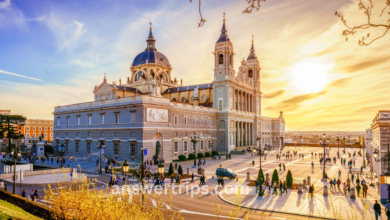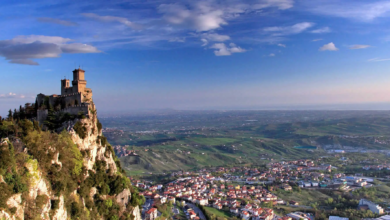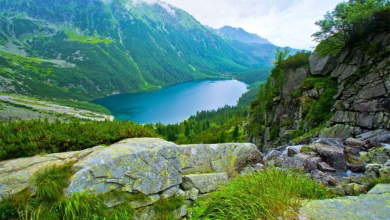Explore Slovakia: the best family tours

Slovakia, a hidden gem in Central Europe, offers breathtaking landscapes, rich history, and vibrant culture. From the majestic Tatra Mountains to charming medieval towns, there’s much to discover. Here’s a guide to the best sightseeing tours, accommodations, and travel options
Index
H2Recommended Guided Tours in the High Tatras 2
H2Best Times to Visit the High Tatras 3
H2Best Beginner Hiking Trails in the High Tatras 4
H2Packing List for a Day Hike 5
H2Best Times to See Wildlife 7
Top Sightseeing Tours 1
1. Bratislava Old Town
Explore the capital’s picturesque Old Town, where cobblestone streets lead you to historic sites like:
- Bratislava Castle: Offering panoramic views of the city and the Danube River.
- St. Martin’s Cathedral: A stunning Gothic structure with a rich history.
- Michael’s Gate: The only preserved city gate from the medieval fortifications.
2. High Tatras National Park
A paradise for nature lovers and hikers. Popular activities include:
- Hiking Trails: Various levels of difficulty, with routes leading to breathtaking peaks like Gerlachovský štít.
- Tatranská Lomnica: A quaint town serving as a base for mountain excursions.
3. Koshice
Discover Slovakia’s second-largest city, known for its vibrant cultural scene. Must-see attractions:
- St. Elisabeth Cathedral: A stunning example of Gothic architecture.
- The Singing Fountain: A delightful show combining water, light, and music.
4. Spiš Castle
Explore one of the largest castles in Central Europe, a UNESCO World Heritage site. The castle offers guided tours that delve into its fascinating history.
5. Slovak Paradise National Park
Ideal for adventure enthusiasts, this park features:
- Via Ferrata: A secured climbing route offering spectacular views.
- Waterfalls and Caves: Stunning natural formations and hiking trails.
Accommodations
Best Hotels
- Grand Hotel River Park, Bratislava
- Luxurious amenities, a spa, and a prime location near the river.
https://snaptravel.tp.st/B2icURFz
- Hotel Tatra, Košice
- A comfortable stay with modern facilities and easy access to the city’s attractions.
https://hotellook.tp.st/MzWuklqo
- Hotel Lomnica, Tatranská Lomnica
- A blend of tradition and modernity, perfect for those exploring the High Tatras.
Booking Tips
- Book Early: Especially during peak tourist seasons (summer and winter).
- Check for Packages: Many hotels offer tour packages that include sightseeing.
Flights and Transportation
Getting There
- Airports: The main international airport is M. R. Štefánik Airport in Bratislava. Other airports include Košice and Poprad.
- Flight Options: Major airlines operate flights from various European cities. Look for budget airlines for more affordable options.
Getting Around
- Public Transport: Slovakia has a reliable train and bus system connecting major cities and attractions.
- Car Rentals: Renting a car provides flexibility, especially for exploring rural areas and national parks.
Slovakia is a captivating destination that offers a diverse range of experiences, from cultural explorations to outdoor adventures. With its stunning landscapes, historical sites, and welcoming hospitality, it’s a perfect spot for your next vacation. Whether you’re hiking in the Tatras or wandering through Bratislava’s streets, Slovakia promises unforgettable memories.

Recommended Guided Tours in the High Tatras 2
1. Tatra National Park Hiking Tours
- Description: Guided hikes through the stunning trails of Tatra National Park, suitable for beginners to advanced hikers.
- Highlights: Scenic views, crystal-clear lakes, and encounters with local wildlife.
- Duration: Half-day or full-day options available.
2. Via Ferrata Adventures
- Description: For the adventurous, these guided climbing tours offer a mix of hiking and climbing along secured routes with cables.
- Highlights: Dramatic cliffs and breathtaking panoramas.
- Duration: Typically full-day tours.
3. Tatras Sightseeing Tour
- Description: A comprehensive tour that includes visits to major attractions like:
- Strbske Pleso: A beautiful glacial lake.
- Hrebienok: Accessible via a funicular railway.
- Duration: Full-day with time for exploration.
4. Winter Sports Tours
- Description: Guided skiing or snowboarding tours during the winter months in popular resorts like Jasná or Tatranská Lomnica.
- Highlights: Expert instruction and access to the best slopes.
- Duration: Full-day tours.
5. Cultural and Historical Tours
- Description: Explore the cultural heritage of the region with visits to local villages and historical sites.
- Highlights: Traditional Slovak cuisine, folk architecture, and local customs.
- Duration: Half-day or full-day options.
6. Wildlife Watching Tours
- Description: Guided tours focused on observing the unique flora and fauna of the High Tatras.
- Highlights: Possibilities of spotting chamois, deer, and various bird species.
- Duration: Half-day tours.
How to Book
- Tour Operators: Look for local tour companies that specialize in mountain tours, such as Tatry Motion or High Tatras Adventures.
- Online Platforms: Websites like GetYourGuide or Viator can also offer a variety of tours with user reviews.

Best Times to Visit the High Tatras 3
1. Spring (April to June)
- Activities: Hiking, wildlife watching.
- Highlights: Blooming flowers, lush greenery, and fewer crowds. Ideal for enjoying nature as it awakens.
2. Summer (July to August)
- Activities: Hiking, climbing, sightseeing.
- Highlights: Warm weather and accessible trails make it the peak season for outdoor activities. However, expect larger crowds, especially at popular locations.
3. Autumn (September to October)
- Activities: Hiking, photography, cultural tours.
- Highlights: Stunning fall foliage and mild temperatures. This season offers fewer tourists and is perfect for photography and enjoying the natural beauty.
4. Winter (December to March)
- Activities: Skiing, snowboarding, winter hiking.
- Highlights: Excellent conditions for winter sports, especially in January and February. The snowy landscape is perfect for winter enthusiasts.
Summary
- Best Overall: Late spring (May to June) and early autumn (September) for pleasant weather and fewer crowds.
- Best for Winter Sports: December to March for skiing and snow activities.
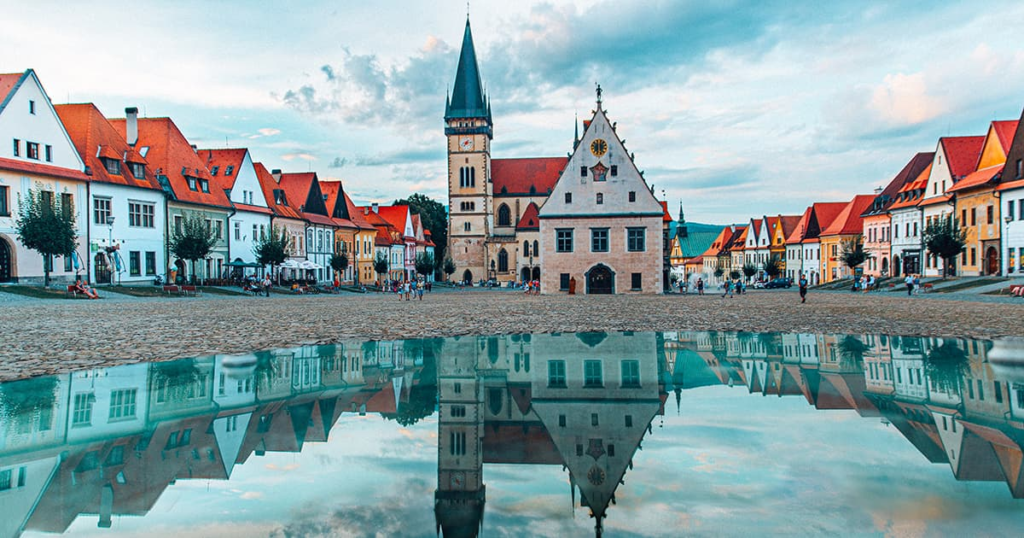
Best Beginner Hiking Trails in the High Tatras 4
1. Strbske Pleso to Hrebienok
- Distance: Approximately 5 km (3.1 miles) one way.
- Duration: 1.5 to 2 hours.
- Highlights: A scenic trail that starts at the beautiful Strbske Pleso lake and takes you to Hrebienok, with stunning views of the surrounding mountains.
2. Tatranska Lomnica to Skalnate Pleso
- Distance: About 4 km (2.5 miles) one way.
- Duration: 1.5 to 2 hours.
- Highlights: This easy trail offers beautiful views and can be accessed via a funicular railway, making it convenient for beginners.
3. Bielovodska Dolina
- Distance: 7 km (4.3 miles) round trip.
- Duration: 2 to 3 hours.
- Highlights: A relatively flat trail that leads through a picturesque valley with stunning natural scenery and waterfalls.
4. Rohacska Dolina
- Distance: Approximately 6 km (3.7 miles) round trip.
- Duration: 2 to 3 hours.
- Highlights: This trail is easy to navigate, featuring beautiful views of the Roháče mountains and a tranquil atmosphere.
5. Popradské Pleso
- Distance: About 2 km (1.2 miles) one way.
- Duration: 30 minutes to 1 hour.
- Highlights: A short and easy trail that leads to a stunning glacial lake, perfect for a leisurely hike and picnic.
Tips for Beginner Hikers
- Start Early: To avoid crowds and enjoy cooler temperatures.
- Wear Proper Gear: Good hiking shoes and weather-appropriate clothing are essential.
- Stay Hydrated: Carry enough water, especially on warmer days.
- Check Weather Conditions: Mountain weather can change rapidly, so be prepared.

Packing List for a Day Hike 5
1. Clothing
- Base Layer: Moisture-wicking shirt (short or long-sleeve depending on the weather).
- Insulating Layer: Lightweight fleece or sweater for warmth.
- Outer Layer: Waterproof and windproof jacket.
- Hiking Pants: Comfortable, quick-drying pants. Avoid jeans.
- Hat: A sun hat for sunny days or a beanie for cooler weather.
- Gloves: Lightweight gloves, especially in colder months.
- Socks: Moisture-wicking hiking socks (bring an extra pair).
2. Footwear
- Hiking Boots/Shoes: Sturdy, comfortable, and broken-in footwear with good traction.
3. Backpack
- Daypack: A lightweight backpack (20-30 liters) to carry your gear comfortably.
4. Hydration
- Water Bottle: At least 1-2 liters of water or a hydration system.
5. Food
- Snacks: Energy bars, nuts, dried fruit, or sandwiches for quick energy.
6. Navigation and Safety
- Map and Compass/GPS: Essential for navigation in remote areas.
- First Aid Kit: Basic supplies including band-aids, antiseptic wipes, and any personal medications.
- Whistle: For emergencies.
7. Sun Protection
- Sunscreen: High SPF to protect against UV rays.
- Sunglasses: UV protection to shield your eyes.
8. Extras
- Camera/Phone: For capturing the stunning scenery (ensure it’s charged).
- Trekking Poles: Optional, but helpful for stability on uneven terrain.
- Trash Bag: To pack out any waste and keep the area clean.
9. Weather Considerations
- Check the forecast: Adjust your packing list based on the expected weather conditions.
10. Emergency Items
- Headlamp or Flashlight: In case your hike takes longer than expected.
- Multi-tool/Knife: Useful for various tasks.
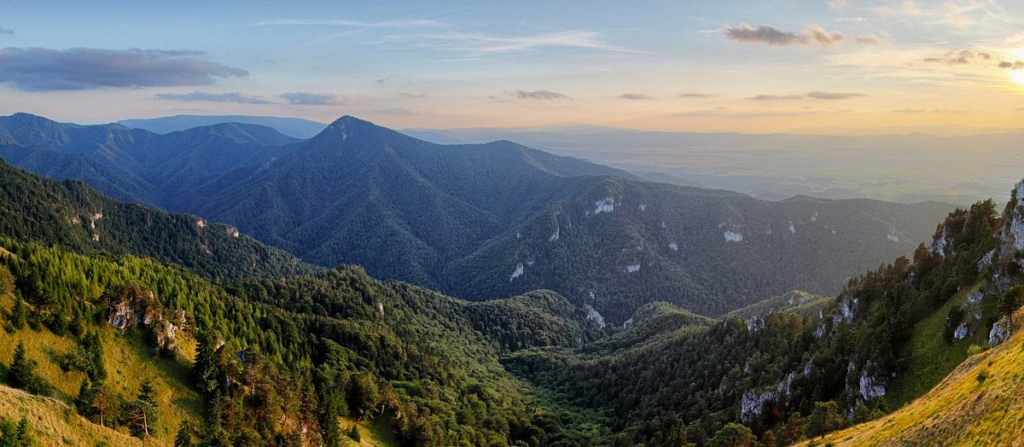
Wildlife to Watch For 6
1. Chamois (Rupicapra rupicapra)
- Description: Goat-antelope known for its agility on steep terrain.
- Behavior: Generally wary of humans but can often be seen on rocky slopes.
2. Tatra Marmot (Marmota marmota)
- Description: A social rodent typically found in alpine meadows.
- Behavior: Known for their loud whistles as a warning signal.
3. Brown Bear (Ursus arctos)
- Description: Large, powerful mammals that inhabit forested areas.
- Behavior: Generally shy and avoid humans, but it’s best to make noise to avoid surprising them.
4. Eurasian Lynx (Lynx lynx)
- Description: A medium-sized wild cat with tufted ears and a short tail.
- Behavior: Rarely seen, as they are elusive and primarily nocturnal.
5. Golden Eagle (Aquila chrysaetos)
- Description: A large bird of prey known for its impressive wingspan.
- Behavior: Often seen soaring high in the mountains, hunting for small mammals.
6. Various Bird Species
- Description: The region is home to many birds, including alpine accentors and snow finches.
- Behavior: Look for them in meadows and rocky areas.
Safety Tips
- Stay Alert: Be aware of your surroundings and watch for wildlife.
- Keep Distance: Observe animals from a safe distance; do not approach or feed them.
- Make Noise: Talk or clap occasionally to avoid surprising wildlife, especially bears.

Best Times to See Wildlife 7
1. Spring (April to June)
- Chamois: Active during this time as they come down from higher elevations.
- Marmots: Emerging from hibernation; you can see them in meadows.
- Birds: Many migratory birds return, making it a great time for birdwatching.
2. Summer (July to August)
- Chamois and Marmots: Most active and visible due to better weather and longer days.
- Golden Eagles: Often seen soaring in the skies; this is a prime time for spotting them.
- Other Birds: Many species are nesting, so birdwatching is very rewarding.
3. Autumn (September to October)
- Chamois: Still active, especially as they prepare for winter.
- Bears: Active during this time, foraging for food before hibernation.
- Birds: Some species begin their migration, providing opportunities to see various birds.
4. Winter (December to February)
- Bears: Generally hibernate, so sightings are rare.
- Chamois: Can still be seen on sunny slopes, but they are less active.
- Eagles: May be spotted, especially in lower valleys where food is available.
Summary
- Best Overall: Late spring and summer for the most wildlife activity.
- Autumn: Great for chamois and bear sightings before hibernation.
Each season offers unique opportunities for wildlife observation, so plan your hike accordingly!
